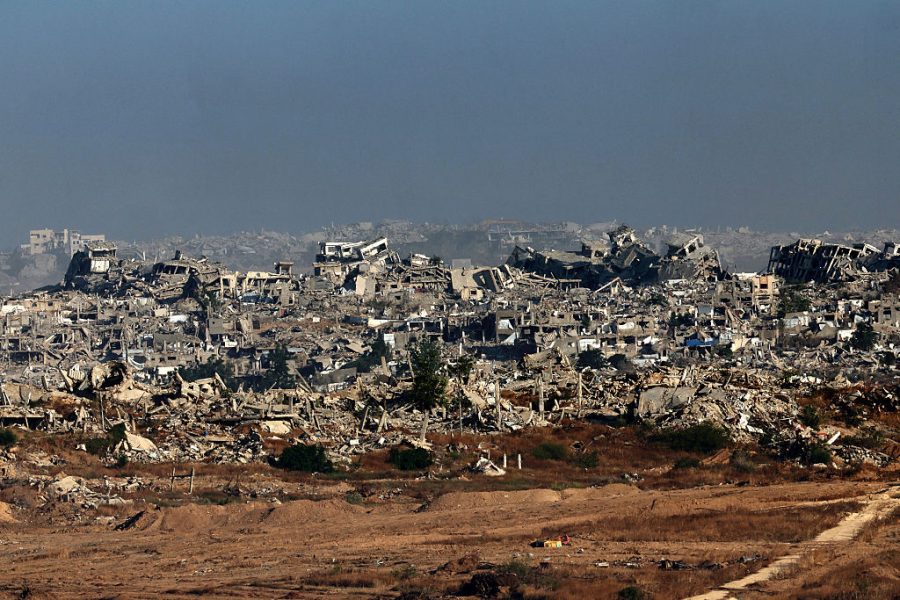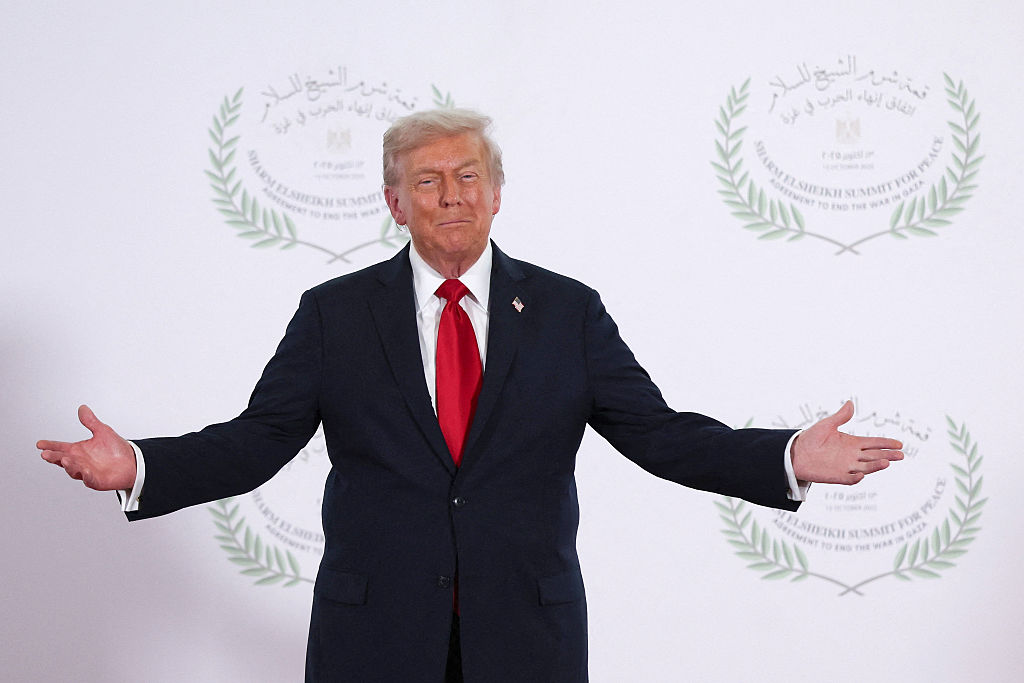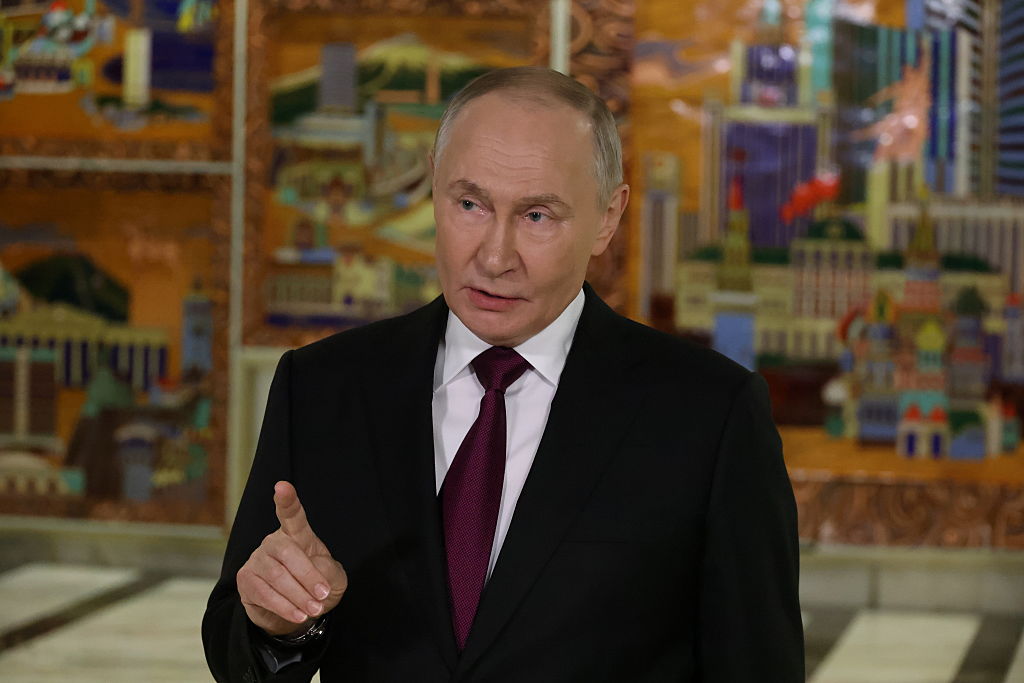US Envoy Steve Witkoff finally received an answer to his latest proposal for a ceasefire and hostage exchange in Gaza over the weekend from Hamas: a no in all but name. This apparent rejection by the terror group confirms the essential issue under dispute in the conflict.
The Gaza Islamist movement is determined to secure a situation in which Israeli forces withdraw from the territory and in which Hamas can begin the process of replenishing and reorganizing its own forces and capacities. Any agreement which threatens to reduce the main asset Hamas holds to prevent Israel from executing a full push towards its destruction – namely, the remaining Israeli hostages – while failing to guarantee that no such push will take place, must automatically be rejected.
Israel, by contrast, has from the outset of the war been forced to juggle two contradictory objectives
Few of the details of Witkoff’s proposal have been made public. But from what we know, it put forward that ten of the twenty remaining Israeli hostages would be released in the course of a proposed 60-day ceasefire. A large number of Palestinian prisoners (125 serving life sentences for terror offenses, plus 1,111 detained after October 7) would be released in return for the ten Israelis. It clearly did not carry the required guarantees for the Gaza Islamists. So they rejected it (while subsequently, apparently under pressure from the Arab mediators, expressing their willingness to continue discussion of the “points of contention’”)
Hamas’s position is clear and singular in nature. It sees no reason to soften or compromise it. Deriving from its Islamist ideology, the terror group is entirely indifferent to loss of life among the residents of Gaza, so their undoubted suffering does not bring about the slightest shift in its stance. It also appears to prefer the continued decimation of its own forces rather than accept a result in the war which would de facto force it to accept a continued Israeli presence in Gaza, and therefore make it impossible for Hamas to reorganize.
Israel, by contrast, has from the outset of the war been forced to juggle two contradictory objectives. Jerusalem has stated since the start that its war aims consist of the freeing of all Israeli hostages, and the destruction of Hamas’s governing and military capabilities in Gaza. These aims are contradictory in that if they prioritize the former, this must inevitably reduce one’s determination to pursue the latter. Prioritize Hamas’s destruction, by contrast, and you reduce the possibility of getting hostages back.
This was precisely the reason that Hamas focused on hostage-taking in the first place. It intended, and still intends, to ensure its survival and the frustration of Israel’s aims by the continued incarceration of Israeli captives. It considered, and evidently still considers, that given the nature of Israeli society, and in light of past performance, Jerusalem must in the end prioritize the hostage issue. Hamas intends to ensure its survival by deft exploitation of this dynamic.
Israel’s war effort for most of the last 19 months has been stymied by this contradiction. While portraying its campaign as an attempt to destroy Hamas capacities, Israel in fact sought to apply military pressure on the terror group to soften its stance in the hostage negotiations. The blows suffered by the Gaza Islamists were real and telling – but they inevitably stopped short of a real effort to destroy Hamas in the territory, because to do so would have endangered or doomed the hostages. Hence the ongoing raids and subsequent withdrawals.
This logic was, for obvious reasons, not admitted by Israeli spokespersons, who continued to maintain that there was no contradiction between Israel’s war aims, and that it was pursuing both of them. Reality, however, was stronger. Now, Jerusalem’s acceptance of Witkoff’s framework suggests that clearly the US envoy’s proposal was in line with both of these goals.
The problem for Hamas is that having now negotiated away and returned the majority of hostages, it is in danger of finding itself in a situation where it no longer has the assets to hold Israel off with, but has not yet reached an agreement to end the war. Witkoff’s proposal threatened to bring about this situation.
The proposal included the stipulation that negotiations for a permanent ceasefire would commence during the 60-day lull. Should such an agreement be reached, the remaining hostages would be freed. The proposal makes clear that if no such agreement is achieved, then the temporary ceasefire could be extended, with the agreement of both parties.
This, of course, brings with it the uncomfortable possibility for Hamas that Israel may prefer not to extend the ceasefire. Rather, at this point, Netanyahu’s forces could recommence their operation “Merkavot Gidon” (Gideon’s Chariots), whose stated intention is the conquest of the entire Gaza Strip and the dismantling and destruction of Hamas in the territory. This would mean Hamas’s clear defeat in the war and is the outcome that the organization most fears.
Witkoff’s proposal further suggests that the release of the hostages be carried out on days one and seven of the ceasefire. This brought for Hamas the yet more worrying possibility that the pause in the conflict could in any case be very short-lived. The terror group would face the prospect of being left with a diminishing number of the human shields that it has used for 19 months to prevent its destruction, while still lacking guarantees against that outcome.
For these reasons, Hamas’s decision to reject the proposal is unsurprising. The terror group is trying to buy time, perhaps in the belief that international and US pressure may eventually force Israel to abandon its effort to destroy the organization in Gaza. Such a belief would not be without merit, and has precedent. In 2006 and in 1973, Israeli military campaigns stopped short because of external diplomatic pressure.
In a statement delivered on Saturday, Hamas reiterated its goals for “a permanent ceasefire” and “the full withdrawal of Israeli forces from the Gaza Strip.” In doing so, it reiterated the basic point at issue in the war, and its own refusal to concede it.
So what happens now? The war between Israel and Hamas should properly be understood as a contest between societies and systems, rather than between armed forces. The Gaza Islamists, militarily the far weaker of the sides, hope through manipulation of Israeli society’s high sensitivity to the lives of its own civilians to stymie any Israeli military response, increase and exacerbate existing societal divisions within Israel, and lead eventually to the cessation of Israel’s war effort – either as a result of internal divisions, or external pressure, or a combination of the two.
A permanent ceasefire and Israeli withdrawal, with Hamas still on its feet as Israel pulls back, would then legitimately be presented by the movement as victory. This achievement would then help recruitment and provide inspiration both for Hamas itself and for other Islamist and jihadi movements in the region and beyond it.
Israel, meanwhile, hopes that by unambiguously crushing Hamas in Gaza, it can demonstrate that its own societal model possesses the vigour to respond to the Islamists’ long war against it, to frustrate their aims, and roll them back. If this could be achieved in part by separating the population from Hamas, and by the population of Gaza then abandoning or turning on their Islamist rulers, then so much the better. Witkoff’s proposal doesn’t seem like it will resolve this issue any time soon – and so Israel’s war with Gaza looks set to continue.

























